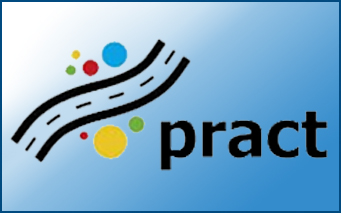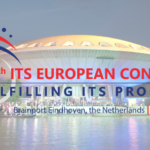
ERTICO – ITS Europe , in co-operation with the European Commission organised the 13th ITS European Congress, which was held in Eindhoven, on 3-6 June 2019, was hosted by the Municipality of Eindhoven and Municipality of Helmond. The ITS Congress in Europe, is the largest event entirely dedicated to smart mobility and digitalisation of transport. ![]()
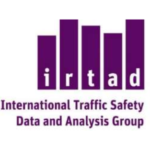
The International Traffic Safety Data and Analysis Group (IRTAD) of the International Transport Forum (ITF) organised a Meeting in Belgrade, Serbia, on 17-18 October 2018, in which the latest international road safety developments were discussed. ![]() NTUA contributed actively with 3 presentations:
NTUA contributed actively with 3 presentations:
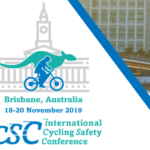
The Centre for Accident Research and Road Safety-Queensland (CARRS-Q) organised with great success 8th International Cycling Safety Conference (ICSC2019) which was held in Brisbane, Australia, on 18-20 November 2019. The ICSC is a forum for researchers and experts in the field of cycling safety to exchange their knowledge and bring up new research topics or safety solutions. The conference facilitated interaction between participants and offered a premium forum to share scientific results and ideas, and favours networking in the cycling safety community. ![]()

The UN Road Safety Collaboration organised with great success the global campaign for the Fifth UN Global Road Safety Week, on 6-12 May 2019, under the theme “Leadership for road safety“. The goal of the global road safety week, was to generate a demand from the public and the civil society to generate demands for strong leadership for road safety, especially around concrete, evidence-based interventions which will save lives and to inspire leaders to take action by showcasing examples of strong leadership for road safety within governments, international agencies, NGOs, foundations, schools and universities, and private companies. ![]()
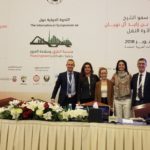
The Emirati Traffic Safety Society (ETSS) along with the Arab Road Safety Organization (AROSO), La Prevention Routière Internationale (PRI) and the International Road Federation (Geneva, Switzerland) co-organized an International Conference on: “Safer Roads & Mobility” which was held with great success in Abu Dhabi, UAE, on 24 – 25th, October, 2018. The conference program focused specifically on Pillar II “Safer Roads and Mobility” of the Decade of Action for Road Safety (2011-2020) due to its sensitive impact on reducing road traffic fatalities. ![]()
![]()

The 31st ICTCT conference was held with great success in Porto, Portugal on 25-26th October 2018, under the main topic “On the track of future urban mobility: safety, human factors and technology”. The conference was organised in close co-operation with the Research Centre for Territory, Transports and Environment, Faculty of Engineering, University of Porto, Portugal. The objective of the conference was to support the understanding of future trends in urban mobility and their implications for the safety of all road users. ![]()
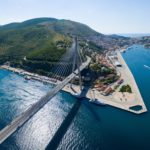
The European Union Road Federation (ERF) together with IRF Global and the support of NTUA, organised the European Road Conference “Corridors for Shared Prosperity”, which took place with great success in Dubrovnik, Croatia, on 22-24 October 2018. This conference offered an essential platform to deepen the understanding of these challenges, widen the engagement framework with regional road stakeholders, and achieve consensus on key policy, investment and planning measures. ![]()
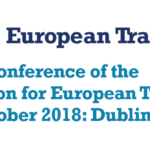
The Association for European Transport organised the 46th European Transport Conference, which took place with great success in Dublin, Ireland, on 10-12 October, 2018. The European Transport Conference (ETC) is the annual conference of the Association for European Transport. Each year the conference presents the opportunity to interact with a range of speakers across the Transport Industry, including several Road Safety Topics. The range of topics, the multi-seminar approach and the networking environment makes ETC unique among transport conferences, making it the established premier event of its type. ![]()

Dimitris Tselentis has successfully defended his PhD dissertation titled: Benchmarking Driving Efficiency using Data Science Techniques applied on Large-Scale Smartphone Data. This PhD thesis was carried out at the Department of Transportation Planning and Engineering at the School of Civil Engineering of the National Technical University of Athens under the supervision of Prof. George Yannis, with the support and data from OSeven Telematics. The main objective of this PhD is to provide a methodological approach for driving safety efficiency benchmarking on a trip and driver basis using data science techniques. It also investigates the way to achieve this by defining a safety efficiency index based on travel and driving behaviour metrics collected from smartphone devices. Furthermore, the present doctoral research proposes a methodological framework for identifying the least efficient trips in a database and for estimating the efficient level of metrics that each non-efficient trip should reach to become efficient. Finally, this dissertation’s objective is to study the temporal evolution of driving efficiency and identify the main driving patterns and profiles of the driver groups formed. ![]()
![]()
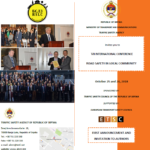
Every year Republic of Bosnia and Herzegovina, loses many valuable human lives and incurs enormous economic costs caused by road accidents. The Traffic Safety Agency of Republic of Bosnia and Herzegovina in cooperation with the European Transport Safety Council (ETSC) organized the 7th International Conference Road Safety in Local Community, which took place with great success in Banja Luca, Bosnia and Herzegovina on 25-26 October 2018 aiming to constantly strengthen and develop capacities at the local level and create groups of road safety experts who will have enough enthusiasm, courage and will to fight with this problem facing the country. ![]()
![]()
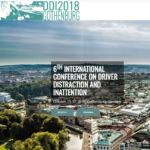
The 6th International Conference on Driver Distraction and Inattention (DDI2018) was held with great success in Gothenburg, Sweden, during October 15-17, 2018. Nearly 190 delegates from 26 countries attended DDI2018 which is a record number of delegates. The conference was hosted and co-organised by the SAFER Vehicle and Traffic Safety Centre at Chalmers in Sweden, the French Institute of Science and Technology for Transport, Development and Networks (IFSTTAR), and the Australian Road Research Group (ARRB). The conference’s theme was “Driver engagement during assisted driving” and a majority of the research results gave new valuable knowledge about how self-propelled vehicles should be designed to enable drivers to handle them. ![]()

The 8th conference of European Association for Research in Transportation (hEART) took place in Budapest on 4-6 September 2019. The conference was organized by the Faculty of Transportation Engineering and Vehicle Engineering at Budapest University of Technology and Economics (BME), and covered relevant areas of transportation research with specific focus on methods, models and planning of transport systems. The aim of the conference was to connect researchers in transport modeling, transport economics and transport policy with advanced practice. Bringing together leading experts and promising young researchers, the symposium offered an opportunity for scientific discussion and interaction in relatively small groups. The conference was accompanied by social events, and a summer school intended for PhD students the day before the symposium. ![]()
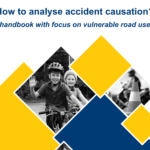
The Horizons 2020 research project InDev (In-depth Understanding of Accident Causation for Vulnerable Road Users) recently published a handbook with focus on vulnerable road users entitled: How to analyse accident causation? This handbook was developed to help road safety professionals diagnose road safety problems by gaining more insights into the mistakes by road users that lead to collision. It describes various road safety methods that can be applied for studying the safety of vulnerable (and other) road users, including: accident data analysis, conflict and behavioural observations, self-reporting and naturalistic studies and road safety audit and inspection. ![]()
![]()

The United Nations Road Safety Trust Fund which launched in April 2018, took an important step towards becoming operational, with the first meetings of its Advisory Board and Steering Committee taking place in Geneva. The Trust Fund aims to catalyze efforts to address the critical global road safety situation by bridging the gaps in the mobilization of resources and ensuring the effective coordination of action at all levels. ![]()
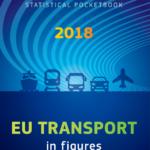
The Directorate General for Mobility and Transport (DG Move) of the European Commission released the Statistical Pocketbook 2018 ‘EU Transport in figures‘. In this Statistical Pocketbook, key road safety Tables are contained, together with several other Tables on transport statistics, providing a complete picture of current trends in transport in Europe. Data on road fatalities for the EU member states and associate countries allow for time series comparisons and country rankings. ![]()
![]()
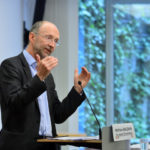
EU Transport Commissioner Violeta Bulc recently announced the appointment of Matthew Baldwin as European Coordinator for Road Safety to help drive forward the new road safety strategy as set out under the key actions in the Commission’s third Mobility Package to modernise Europe’s transport system in May 2018. The role will involve the coordination of road safety efforts with Member States, the European Parliament, cities, regions and all stakeholders in the road safety community. ![]()
![]() Matthew Baldwin gave an exclusive interview to the NTUA Road Safety Observatory:
Matthew Baldwin gave an exclusive interview to the NTUA Road Safety Observatory:
NRSO: Matthew, tell me a bit about this new role of the European Coordinator for the promotion of road safety in Europe and what will be your specific areas of focus?
MB: First, thanks for this opportunity to set out what this role is all about and how I see it as fitting into our road safety “architecture”. It stems from the European Commission’s proposals last May for a new common framework for road safety and a strategic road safety action plan for Europe. We felt we needed someone to promote and coordinate this work at the European level, to give the proposals a push with Member States, with NGOs, with industry – and with vital academic bodies such as the NTUA! Luckily for me, Commissioner Bulc asked me to do it as part of my responsibilities as Deputy Director General here at DG MOVE, and to focus in particular on how we can deliver the results, how we can get back on the downward curve for deaths. Your readers will probably know, but we managed to reduce deaths by more than 50% in the first 15 years of this decade, but in the last few years, this has flattened out and we are currently going to miss the targets for 2010-20.
MB: So we need, as Commissioner Bulc puts it, a paradigm shift. Connected, cooperative, automated, autonomous mobility will ultimately deliver huge benefits – but for many years to come, probably for most of the next two decades, we will need to rely on implementing the Safe System as humans will continue to make mistakes, and we need to do everything we can to stop people dying or being seriously injured by those mistakes.
MB: There’s certainly a lot going on at national, regional, city level, reflecting the diversity of road safety performance across the EU, and we certainly don’t want to try to push a top down, one size fits all, model. What we are proposing is to widen the scope beyond the classic TEN-T roads to include the next level down, the national or primary roads, and where around 40% of the deaths occur. We also want Member States to take the needs of Vulnerable Road Users systematically into account in their infrastructure planning. The other big piece of legislation where our friends in DG GROW have taken the lead would add 16 new features to EU wide vehicle safety standards, such as intelligent speed assistance, automated braking, for all EU vehicle categories and models. I can’t stress enough how important these proposals could be – our detailed assessment suggests that they could together reduce deaths by more than 10 000 over the next decade, and serious injuries by more than 60 000 – and this is on top of the thousands and thousands of lives that existing legislation has saved. That’s just an illustration – I hope your readers will have a look at our proposals and give us feedback on how we can best implement a new European Road Safety Strategy.
MB: And as to my own role, well I’m still in my first month in the new job, so I am talking to everyone about everything, but I intend to approach it with all the energy I can muster. I am still looking for new ideas, so please follow me on Twitter on @BaldwinMatthew_ and tell me what YOU think needs to be done.
NRSO: Let me ask you about another aspect of the Commission proposals – these Road Safety Key Performance Indicators – how will these work to deliver the EU road safety strategy?
MB: Good question. The need for Road Safety KPIs goes back to the targets. Once again, we are aiming to get to Vision Zero – no road deaths – by 2050. Road safety is an epidemic – and if we can eliminate other epidemics like cholera and smallpox from the EU, no reason not to do the same for road safety. Obviously, with such an ambitious goal, you need to tackle it in chunks and set intermediate targets. It sounds obvious but targets are really really important if we want to get results. Some people argue that targets are dangerous – that if we miss them, we decredibilise the ultimate goals, make people give up. I disagree – we must keep road safety in the public mind, keep our politicians focused on it, as only that way will we get the investment, the people, to work on it.
MB: That is why it is so important that we have at EU level targets to go once again for a 50% reduction target in deaths, and this time also for serious injuries. But – and this is the key point – targets on their own won’t deliver results. We need to apply what we know works, from the massive research that has been done for so many years into the cause of road deaths and injuries, and agree together with the Member States where to put our energies.
MB: And that’s where the Road Safety KPIs come in – to take different elements of the Safe System like seat belt use where we KNOW that improved performance will deliver better results and to eventually identify a subsidiary target. So I hope we will agree on KPIs for protective equipment like seat belts, for use of the safest vehicles, for safe infrastructure, for emergency care, and so on. It’s difficult work as of course the road safety landscape is not the same across Europe. Just take speed, for example, where we have very different limits in different parts of Europe, and different cultures of respect for those limits, enforcement and so on. So we would like to start simply by identifying how much respect there is for existing limits and then later try something more sophisticated that would enable us to measure, and target improvements in, safe speed that takes account of infrastructure, weather conditions and so on. But the bottom line is that we get agreed baselines, common measurement methodology, and link the indicators to the overall outcome targets. Getting the data together is hard, but really important.
NRSO: How you envisage to convince transport / mobility authorities and stakeholders to put road safety higher on their agenda?
MB: Well that’s a leading question ! it would be wrong to suggest that Member States, regions, cities, aren’t already doing their best. But it is also true that resources are so limited now in the public sector, and road safety doesn’t seem to be one of the glamorous topics ! There’s also the strange phenomonen which of course applies globally, namely that we appear to ACCEPT so many deaths – 1.3 million globally, 25,000 a year here in Europe, which of course makes us a success story, relatively speaking. So we need to “stop accepting” this, and I think Commissioner Bulc has done a great job in pushing transport ministers and others not to accept this silent killer. We wouldn’t accept anything like that number of fatalities in other forms of transport or indeed our daily lives, and we shouldn’t accept it for road safety either. Much more prosaically, I want to promote this important Safe System concept of shared responsibility, which applies at all sorts of different levels. We all share responsibility for road deaths and injuries – the road user and other road users, public authorities, the police, car companies, health care systems – and we need a very active, cooperative, holistic approach. We are certainly not into the blame game here, and while of course Member States must take responsibility for what goes on in their countries, there is so much more we can do than naming and shaming – we can learn from each other and promote best practice, such as in putting together national road safety action plans. Put simply, if we can make road safety more of a political priority, more of a collectively shared endeavour, we can develop a virtuous circle to promote change – and get us back on the downward curve of deaths and serious injuries.
MB: The other crucial thing is funding because that is a vital lever to support road safety. We will encourage the use of EU financial support from European structural and investment funds for infrastructure upgrades, for example. I am glad that there are a good number of applications in response to the Connecting Europe Facility’s latest call which expires[d] [this month] [in October] because as Slovakia for instance has shown, some cleverly deployed but even limited funds can go a long way in improving infrastructure. But what we are working towards, what we would most like to see is a flexible, one stop shop for access to different forms of EU funding, whether it is for infrastructure, training, enforcement, so watch this space !
NRSO: What is the link to sustainable mobility in your job title ?
MB: Two things. First and foremost, it is because the statistics show that Vulnerable Road Users (motorcyclists, cyclists, pedestrians) are taking a much bigger share of the casualties. I am told, for instance, that 90% of casualties in Sweden are now VRUs, i.e., those without the protection of a vehicle. We should be celebrating new forms of mobility, particularly active modes such as walkers and bikers, and it is unacceptable (to use that word again) that death and injury should be the result. So I want to work closely with cities in particular in existing forums such as CIVITAS to promote sustainable and safe mobility ! The other point of course is that connected, autonomous, driving etc is going to pose a lot of new challenges, especially in the course of the next two decades as new vehicles come onto our roads. Infrastructure performance requirements will change, eg for road signs. And very different levels of automated vehicle will have to co-exist with each other AND with fully human-driven vehicles for many years to come. As these new systems, such as Cooperative ITS which we are doing a lot to promote here in the EU, are introduced on our motorways, in our urban areas, I want to work with Member States and cities on how best to do this, and how to ensure safety is always to the forefront of decision making.
NRSO: What are your immediate plans for the promotion of the EU road safety strategy?
MB: Again, there is a lot of work going on in the Commission and across the EU, and I should stress that I am not doing all of it or planning to ! I first want to talk to all member states, focusing first perhaps on those where the problem is greatest (we have a wide divergence in death rates) and really hear from them how we can best work together on this. We have a very good established committee which I chair, called the High Level Group, made up of directors from all the Member States responsible for road safety, and I want this group really to be the steering committee for the new strategy (for example, agreeing on the new KPIs). Time is very short if we are to get the new strategy in place for the start of the next decade – I hope we can have initial agreement to what KPIs we are going to deploy by summer 2019. It is also absolutely essential that we get the revised infrastructure directive and car safety regulations agreed before the current European Parliament comes to an end in May of next year. So we will be pushing these issues hard, and also working with UNECE to make sure that we can as far as possible translate and apply globally the safe standards agreed in Europe, particularly as we start to establish standards for automated driving.
MB: Once again, it is a big honor to be asked to work on these vital questions. I want to be a useful resource for Member States, and to work effectively in partnership with them – and all other players in the field. Thanks a lot for this opportunity !
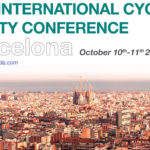
The 7th Annual International Cycling Safety Conference, organised by Chalmers, TNO, SWOV, and TU Delft took place with great success in Barcelona, Spain, on 10-11 October 2018. The ICSC is a forum for researchers and experts in the field of cycling safety to exchange their knowledge and bring up new research topics or safety solutions. The conference facilitates interaction between participants and offers a premium forum to share scientific results and ideas, and favours networking in the cycling safety community. ![]()

2018 NETS’ Strength in numbers Annual Conference took place in Frisco, Texas on October 10 & 11, 2018. The conference convenes each year to review the results of NETS’ annual Strength in numbers Fleet Safety Benchmark Report, as well as to hear about featured road safety case studies, new research, emerging issues, and projects that are underway. This year the conference include: keynote presentations by industry leaders, road safety case studies, new research & technology solutions, emerging issues, ongoing projects, 2017 STRENGTH IN NUMBERS® Fleet Safety Benchmark Report, opportunity to network with other road safety professionals. ![]()
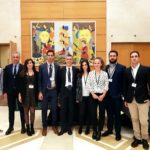
The Hellenic Institute of Transportation Engineers (HITE) and the Department of Civil Engineering, University of Thessaly co-organized the 7th pan-Hellenic Road Safety Conference, which was held with great success in Larissa, Greece on October 11-12, 2018. The main objectives of the Conference were to investigate and evaluate the level of road safety in Greece, as well as the efforts and innovations that are designed and implemented to improve road safety of drivers, vehicles and pedestrians in the Greek road network. ![]()
![]()
![]() NTUA contributed actively with the following 12 presentations (full papers with review and presentation):
NTUA contributed actively with the following 12 presentations (full papers with review and presentation):

 Overview of the SafetyCube project: Towards a European Road Safety Decision Support System
Overview of the SafetyCube project: Towards a European Road Safety Decision Support System
 SafeFITS: A Global Road Safety Model
SafeFITS: A Global Road Safety Model
 The African Road Safety Observatory – African RSO
The African Road Safety Observatory – African RSO
 Safety culture among private and professional drivers: Norway and Greece
Safety culture among private and professional drivers: Norway and Greece
 How is Older Drivers Safety enhanced by In-Vehicle Assistance Systems?
How is Older Drivers Safety enhanced by In-Vehicle Assistance Systems?
 Exploration of real-time crash likelihood of Powered-Two Wheelers in Greece
Exploration of real-time crash likelihood of Powered-Two Wheelers in Greece
 Quantifying the Need for Driving Data Collection in Driving Behaviour Assessment Using Smartphone Data
Quantifying the Need for Driving Data Collection in Driving Behaviour Assessment Using Smartphone Data
 Investigating average speed after an unexpected event through a driving simulator experiment
Investigating average speed after an unexpected event through a driving simulator experiment
 Analysis of the impact of autonomous vehicles to travel behaviour
Analysis of the impact of autonomous vehicles to travel behaviour
 Comparative analysis of young drivers behaviour in normal and simulated conditions in urban environment
Comparative analysis of young drivers behaviour in normal and simulated conditions in urban environment
 The effect of socioeconomics and transportation conditions on road safety in the European Union
The effect of socioeconomics and transportation conditions on road safety in the European Union
 Critical driver behaviour and risk factors in Europe
Critical driver behaviour and risk factors in Europe
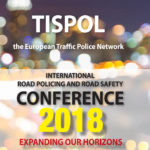
The 2018 TISPOL Conference “Expanding our Horizons” organised by the European Traffic Police Network was held with great success on 9-10 October 2018, in Manchester. The 2018 theme was ‘Expanding our Horizons’ – giving the opportunity to discuss who are the right partners for long-term success in reducing death and serious injury on the roads of Europe. The participants had the opportunity to showcase a selection of innovative work in road safety enforcement, as well as presenting a special discussion and debate on the future direction for Project EDWARD, our ‘European Day Without A Road Death’. ![]()

The final event of the three Horizon 2020 projects InDeV, PROSPECT and XCYCLE took place on October 12th 2018 at Applus+ IDIADA, 70 km south of the city of Barcelona. At this one-day event, results of these three projects on traffic safety analysis and integrated approach towards better protection of vulnerable road users were presented. Participants also had the opportunity to see live demonstrations that were performed. ![]()
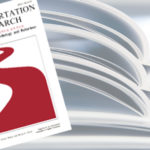
A paper titled “Capturing the effects of texting on young drivers behaviour based on copula and Gaussian Mixture Models” authored by Loukas Dimitriou, Katerina Stylianou, and George Yannis is now published in Transportation Research Part F: Traffic Psychology and Behaviour. This research effort aims to investigate the impact of texting on young drivers’ behavior and safety based on data from driving simulator experiments, for different driving contexts, like motorways, urban and rural roads, during daytime and night, and for alternative weather conditions (‘clear sky’ and rain). GMMs application showed that drivers using mobile phones who were involved in a collision presented a different driving behavior compared to the drivers who were occupied but were not involved in a collision. ![]()

Comité National de Prévention des Accidents de la Circulation and SSATP organised the 1st African Road Safety Forum which took place on 13-15 November 2018 in Marrakech, Morocco. The main objective was to bring road safety to the political attention of the African continent to achieve the goals of the Decade of Action for Road Safety 2011–2020 and the UN Sustainable Development Agenda and to promote international cooperation in the field of road safety and sustainable mobility. ![]()
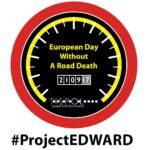
The European Traffic Police Network (TISPOL) together with the European Commission DG Move Road Safety Unit have launched the project EDWARD – the European Day Without A Road Death 2018. This year the European Day without a Road Death took place on Wednesday 19 September 2018. Several events, initiatives and promotional activity right across Europe will take place. Moreover, in the EDWARD website lots of new resources can be found, artwork can be downloaded (including images and Infographics), a countdown timer to the day itself, an interactive map and a brand new pledge to sign. ![]()
![]()
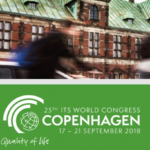
The 25th World Congress on Intelligent Transport Systems, organised by ERTICO – ITS Europe together with ITS America, ITS Asia took place with great success in Copenhagen, on 17-21 September 2018. The Congress provided the ideal opportunity for all stakeholders to come together, discuss and make the necessary contacts to move initiatives forward and to develop their business by exhibiting and demonstrating state of the art ITS solutions. The Congress also showcased the latest ITS achievements, and can help increase awareness of ITS in the Host region itself. ![]()
![]()
The ITS Congress consist of three main areas:
- Congress programme sessions and presentations of the latest developments in ITS
- Demonstrations – showcases of current ITS technology being developed and deployed throughout the world)
- Exhibition – exhibition booths and dedicated sessions/events
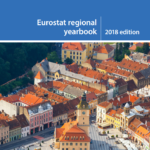
The Eurostat Regional Yearbook 2018 provides a detailed picture relating to a broad range of statistical topics across the Regions of the EU Member States, as well as the Regions of the EFTA and candidate countries, including the European Regions with the lowest and highest road accident rates. Each chapter presents statistical information in maps, tables, figures and infographics, accompanied by a descriptive analysis highlighting the main findings. ![]()
![]()
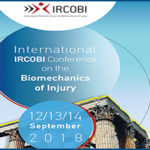
The 2018 International Research Council on the Biomechanics of Injury Europe Conference took place with great success in Athens, Greece, on 12-14 September 2018. The focus of IRCOBI is on the avoidance and reduction of the severity of traffic accidents, with special emphasis on advanced safety technologies and the biomechanics of injury. ![]()
![]()
NTUA actively contributed with the following presentation: ![]()
![]() A preliminary analysis of in-depth accident data for powered two-wheelers and bicycles in Europe
A preliminary analysis of in-depth accident data for powered two-wheelers and bicycles in Europe

The chair of Transportation System Engineering of the Technical University of Munich (TUM) and the Department of Transportation Planning and Engineering of the National Technical University of Athens (NTUA) co-organised the 7th Symposium of the European Association for Research in Transportation (hEART), which took place with great success in September 5-7 2018 in Athens, Greece. hEART is an interdisciplinary research conference, covering all areas of transportation research, with a focus on quantitative methods and analysis of transport systems. The aim of the Symposium was to connect research in transport modelling, transport economics and transport policy with advanced practice. ![]() NTUA actively contributed with the following presentations:
NTUA actively contributed with the following presentations:
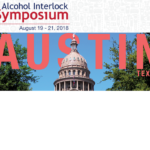
The 17th International Alcohol Interlock Symposium organised by the Traffic Injury Research Foundation (TIRF), took place with great success on 19-21 August 2018, in Austin-Texas, USA. This year’s event will feature a theme surrounding the “Versatility of Alcohol Interlocks”, meant to emphasize the potential interlocks have to deal with the increasing availability of other impairing substances that can be used in combination with alcohol. As interlock technology evolves and devices become easier to use and less intrusive, it becomes increasingly important to understand how intelligent devices can enhance road safety globally. ![]()

The 7th International Symposium on Naturalistic Driving Research is organized by Virginia Tech Transportation Institute (VVTI) and National Surface Transportation Safety Center for Excellence (NSTSCE) and was held in Blacksburg, Virginia on August 28-30, 2018. The 7th International Naturalistic Driving Research Symposium provided with an overview of international naturalistic driving and riding studies and insight into the next generation of this type of studies, in addition to the opportunity to interact with panelists to discuss naturalistic driving in their respective countries. ![]()


















































































